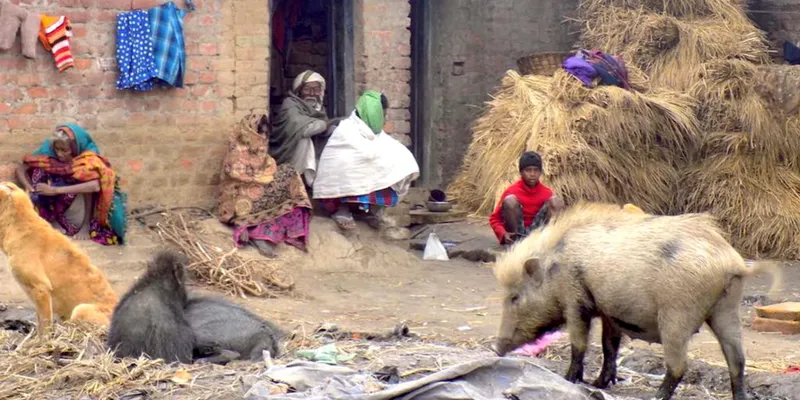Bihar’s Musahar community aims to battle regressive mindsets with education
Derided as eater of rats, a large number of Musahars in Bihar villages see education of their children as the only way out of the everyday oppression they face; however; the going is still tough.

Balmanti Devi and Renu Devi, landless labourers living in Hinduni Musahartoli village of Phulwari Sharif administrative block in Patna district, are sending their children to a government school with the hope that education will help them escape the oppression their parents have faced all their lives.
Balmanti and Renu are two among hundreds of Musahar women in villages spread across flood-prone north Bihar to drought-prone central and south Bihar, who have been silently ensuring that their children go to school for a brighter future. They are in the vanguard of a slow change taking place in the hundreds of Musahartoli or Musaharis, as the villages of Musahars are known.
Languishing at the bottom
At a time when India is making rapid social and economic rapid progress, Musahars are still not allowed to live anywhere in Bihar except in hamlets earmarked exclusively for them. Living in unhygienic conditions with very little benefits from the government, this impoverished and oppressed scheduled caste is overwhelmingly landless, eking out a miserable living by working as unskilled or farm labour.
Bihar has nearly 2.2 million Musahars, according to the state Mahadalit Commission’s interim report. Community activists however claim the population of Musahars is not less than 3 million in the state. About 96.3 percent of them are landless and 92.5 percent work as farm labour. Literacy rates among this community, which the upper caste Hindus still consider untouchable, is only 9.8 percent — the lowest among dalits in the country.
“My elder son, who is 19 years old, is illiterate like most others his age in the community. But my two younger children — 12-year-old daughter and 14-year-old son — are going to school to study. My dream is to make them educated,” Balmanti of Hinduni Musahartoli told VillageSquare.in.
Hinduni Musahartoli is home to over 100 households but has failed to produce a graduate till date. The situation is the same in Kurkuri Musahartoli, a neighbouring village with a population of over 2,000.
Providing new opportunities
Renu, a widow who works as a farm labour to feed her four children, is determined to educate them.
“No doubt I am struggling for survival but I want my children to study for a better future. If my children will not study, they will be forced to work as farm labour like most Musahars,” she says. “Education will provide opportunities to them.”
But Somaru Manjhi, a resident of Kurkuri Musahartoli, said none of his five children went to school. “Even today, a majority of Musahars do not go to school. This is a big hurdle for us,” said Somaru, who rears pigs.
However, a sustained effort by some Musahar households is reflected in the composition of students in the primary school near Kurkuri Musahartoli. “There are 64 Musahar children out of a total of 68 children in the school. It is something that could not be imagined even a few years ago. Musahar parents are now ensuring their children attend school. The situation is changing,” Geetanjali Sinha, Principal of the school, told VillageSquare.in.
Sinha, who has been teaching in this school since 1999, said earlier there was no inclination for education among Musahar parents.
“Now more than men, Musahar women have a positive mindset for the education of their children.”
Ghalib Khan, deputy director of mass education department of the state government, said, “Experts have observed that discrimination on caste lines and a strong reservation for their unhygienic lifestyle leads to discouraging Musahar children from joining school.”
Social outcasts
Musahars, known for hunting and eating rats, are at the bottom of India’s hundreds of dalit sub-castes, who are still treated as untouchables. Asharfi Sada, state president of Mushar Vikas Manch, said high illiteracy among Musahars is due to the fact that they have always been kept away from mainstream society.
“Musahars were not only treated as untouchables but were allowed to only settle outside a village and away from the main population for ages. Even today, Musahars are the outcasts of society,” said Asharfi, one of the first few Musahars to earn a postgraduate degree in 1991.
Most Musahar children did not get an opportunity to join schools and the few who went quickly discontinued because of the discrimination they faced. They also lack the environment for education in their mud huts. “To change the state of Musahars, the government has to provide quality education to entire one generation of children to make them stand on their feet and become independent,” Asharfi told VillageSquare.in.
“It is only possible if the government comes up with a special plan. Private education is beyond their reach.”
Asharfi said that nearly 70 years after India’s Independence, there is only one medical doctor and one PhD scholar from the community, reflecting the sorry state of education in the community.
Vijay Prakash, a former Indian Administrative Service officer, said literacy among Musahars was 2.5 percent in 1961, which rose to a little over 9 percent in 2011. In the past five decades, literacy rate in the community increased to a little over 6 percent.
Going by this trend, it will take some 500 years to achieve full literacy among Musahars, he said.
Enabling environment
“The government and the society have to join hands to come out with a different way to attract Musahar children to schools and create an atmosphere comfortable for them within its walls, keeping their lifestyle, language, and environment in mind. We should encourage them by innovative ways instead of discouraging them by imposing our so-called civilised lifestyle,” said Prakash.

Vijay Prakash is running an alternative education school for Musahar children in Danapur.
“After decades of working closely with Musahars, I am of the view that teachers are not urging Musahar children to join school. We lack sensitivity to their special needs.”
He has found that creativity among poor Musahar children is better than many others. “They are very much inclined towards creating jugaad (made–do) technology and handicrafts,” he said.
Philip Manthra, who has been working for change through education of this community in Patna district for nearly 38 years, said Musahars need to be brought to the forefront of universal education. Manthra has founded an organisation called Manthan to create awareness, motivate and facilitate Musahar children for education.
Education-centric approach
“Education is the key to their development. Education-centric approach with skill development through special programmes by the government can make a difference. They have not been given attention for centuries. Most of them are still living in huts. The government has to invest in creating shelter infrastructure to bring them to the mainstream. They need infrastructure development to create an environment of study,” Manthra told VillageSquare.in.
“Unless there is a proper environment, there is little hope for education.”
Manthra recalled that in 1979, when he along with a team of 25 activists visited Jamsaut village under Danapur block in Patna district, 65 households of Musahars were living without a drop of water during summer. “When I requested for a glass of water, it took 45 minutes for them to arrange it for me from the house of a landowner in a nearby village,” he recalls. “One can imagine how they were living even without water then. Now the situation has changed with hand pumps installed by the government in most of Musahar villages.”
Bihar Chief Minister Nitish Kumar has launched several special schemes for the upliftment of Musahars in the past 11 years, according to Manju Verma, the state’s minister for social welfare.
“The government has set up the Mahadalit Commission for their development and appointed thousands of Tola Sewak (village volunteers) and Vikas Mitra (development assistants) from among them,” she told VillageSquare.in. “We are committed to bring Musahars to the mainstream.”
Disclaimer: This article, authored by Mohd Imran Khan, was first published in VillageSquare.in. The views expressed by the author are his own and do not necessarily reflect that of YourStory.







